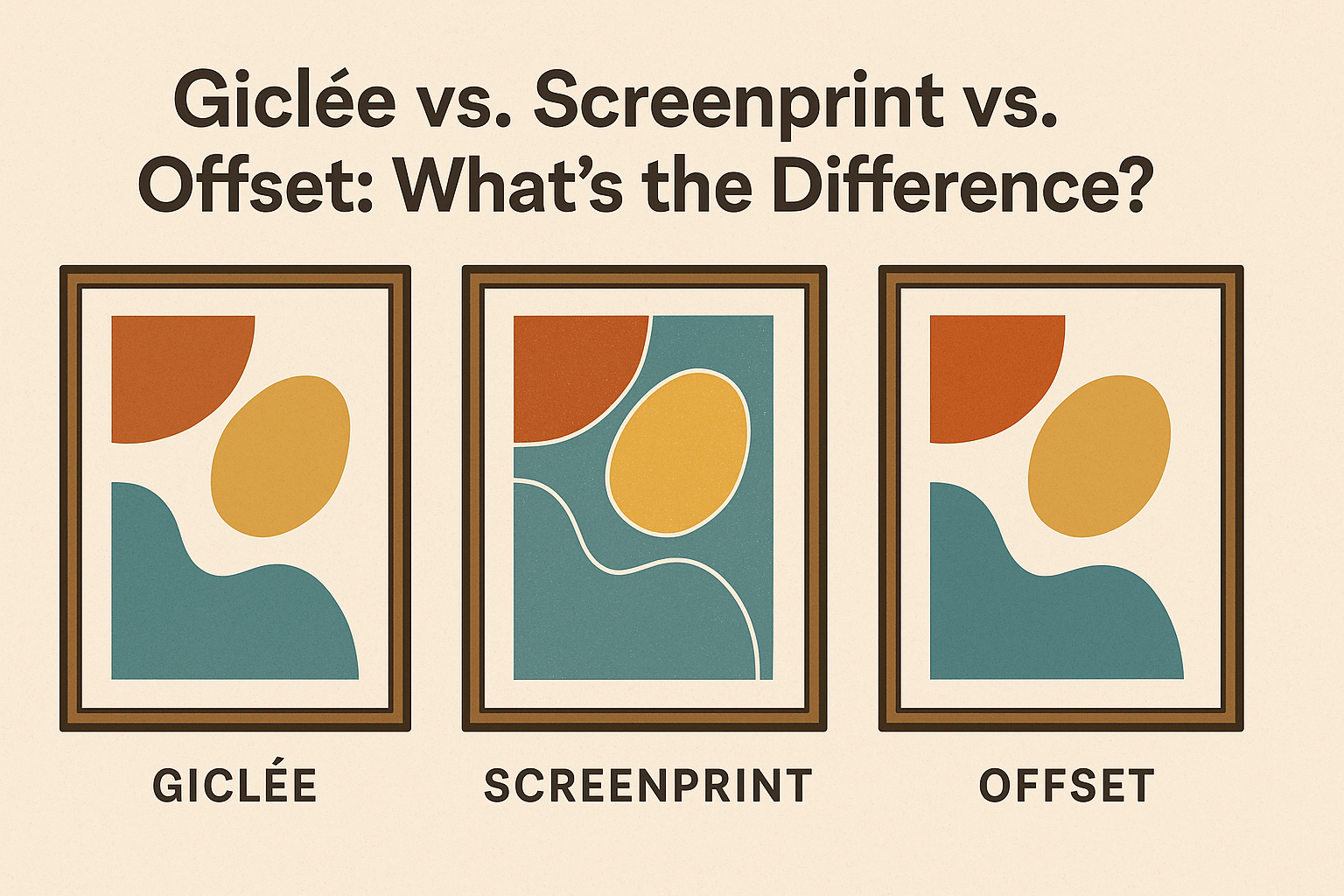Giclée vs. Screenprint vs. Offset: What’s the Difference?

When collecting art or deciding how to produce a print, you’ll often come across three common printing methods: Giclée, Screenprint, and Offset. Each has its own strengths, aesthetic qualities, and price points—knowing the difference can help you better understand a piece’s value or choose the right method for your own work.
🎨 Giclée: Gallery-Quality Inkjet
What it is:
Giclée (pronounced “zhee-clay”) is a high-resolution inkjet printing process using pigment-based inks on archival paper or canvas. It was developed in the 1990s to meet the demand for fine art reproductions.
Best for:
- Photography
- Digital art
- Reproducing paintings with subtle gradients and fine details
Pros:
- Extremely detailed and color-accurate
- Archival quality (can last over 100 years)
- Great for short runs or one-offs
Cons:
- Lacks the tactile quality of handmade prints
- Can be overused in commercial markets, reducing perceived exclusivity
In the art world:
Look for phrases like “museum-grade paper,” “archival inks,” or “limited edition giclée.” Giclée editions are often signed and numbered, though not always hand-touched.
🖐️ Screenprint: Handmade Layers and Texture
What it is:
Also called silkscreen, this process pushes ink through a mesh stencil (screen) one color at a time. Each layer must dry before the next is added, and small imperfections are part of the charm.
Best for:
- Graphic posters
- Street art
- Designs with bold color separation
Pros:
- Rich, vibrant colors with a physical ink texture
- Handmade feel; each print is slightly unique
- Often signed, numbered, and more collectible
Cons:
- Less ideal for gradients or photographic reproduction
- Slower, labor-intensive, and usually limited edition
In the art world:
Shepard Fairey, Andy Warhol, and Banksy have all used screenprinting. Collectors value them for their authenticity, especially when labeled “hand-pulled.”
🖨️ Offset: Fast, Commercial, and Still Beautiful
What it is:
Offset lithography transfers ink from a metal plate to a rubber sheet, then onto paper. It’s the most common method for commercial printing—think posters, magazines, and postcards.
Best for:
- Mass-produced prints
- Promotional or open-edition artworks
- Reproductions of older works
Pros:
- Fast and cost-effective at scale
- Consistent image quality
- Great for large editions and promotional work
Cons:
- Usually not archival
- Less collectible unless signed or rare
- Often lacks the “handmade” factor
In the art world:
Offset prints can still be desirable—especially when signed or produced by notable publishers. They’re often a great entry point for new collectors.
Which One Should You Choose?
| Feature | Giclée | Screenprint | Offset |
|---|---|---|---|
| Color Accuracy | ✅ Excellent | ➖ Bold, less precise | ✅ Good |
| Texture | ➖ Smooth | ✅ Textured | ➖ Flat |
| Archival Quality | ✅ Yes | ✅ Usually | ❌ Not always |
| Collector Value | ✅ Limited Ed. | ✅ High | ➖ Depends |
| Best Use | Fine art | Graphic art | Posters/Promotion |
Final Thoughts
Whether you’re cataloging your collection or printing your own artwork, understanding the differences between giclée, screenprint, and offset helps you make better choices. Each method offers something unique—whether it’s the precision of a giclée, the boldness of a screenprint, or the accessibility of an offset edition.
Curious which prints in your collection are which? Start tagging them on Art Vault and keep track of the details that matter.